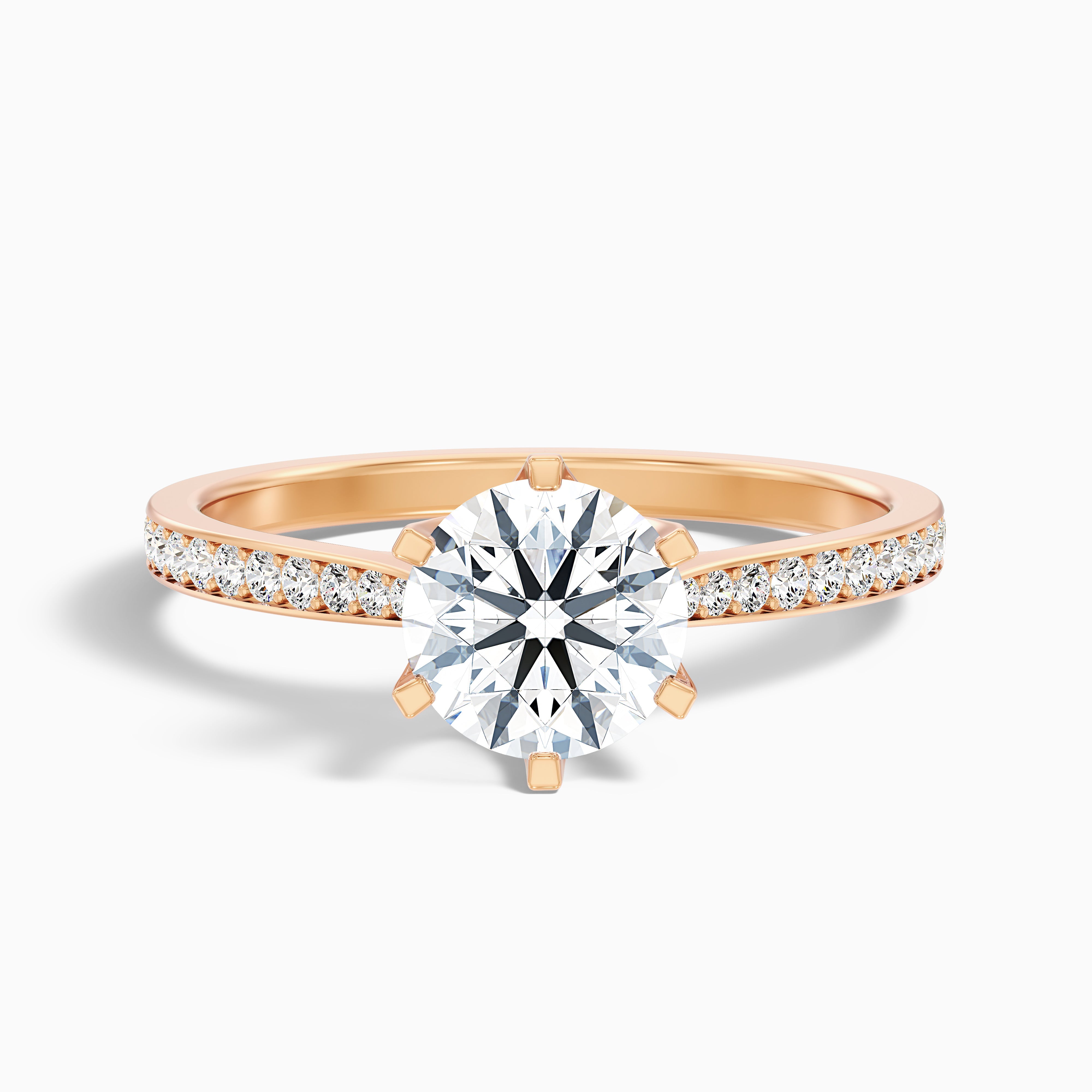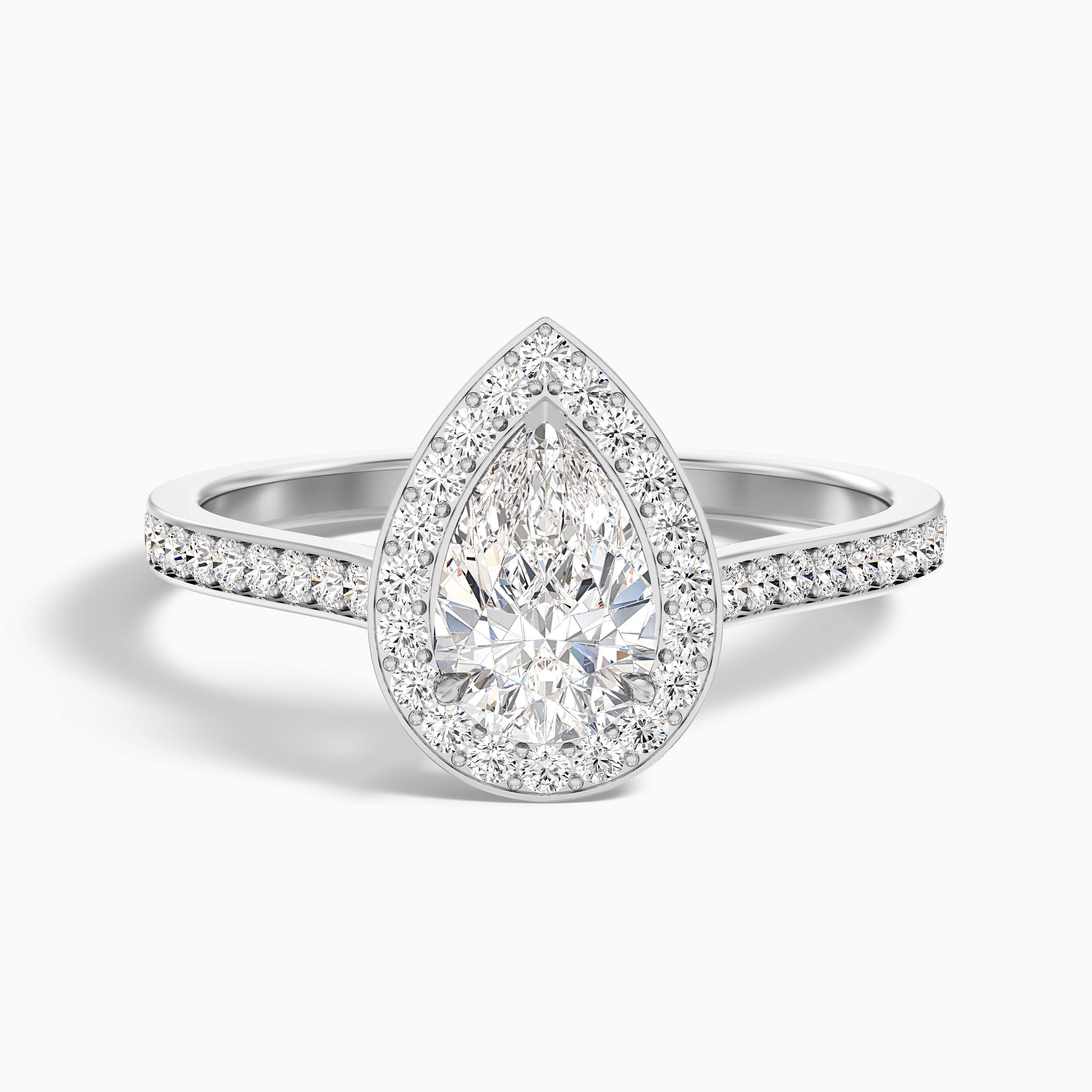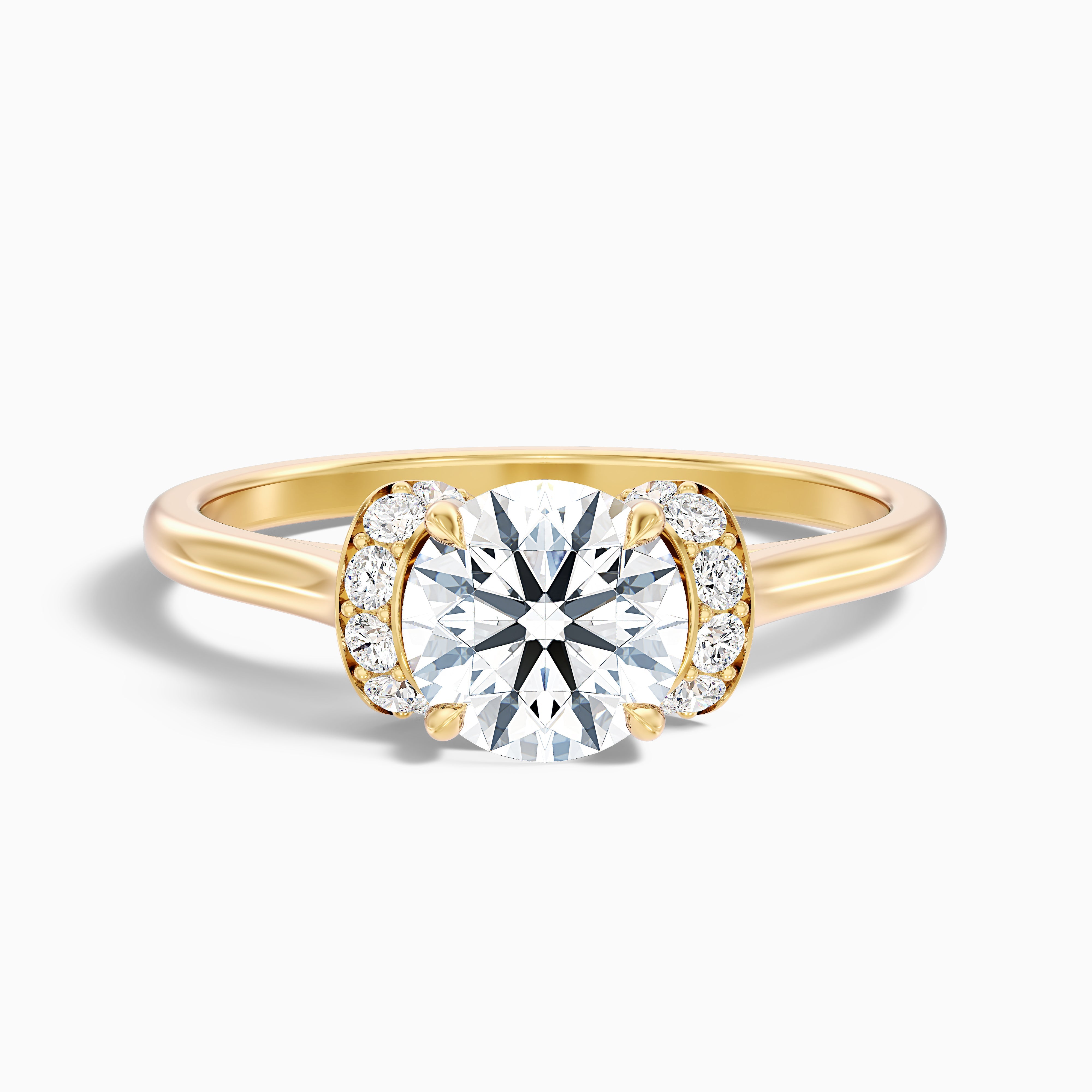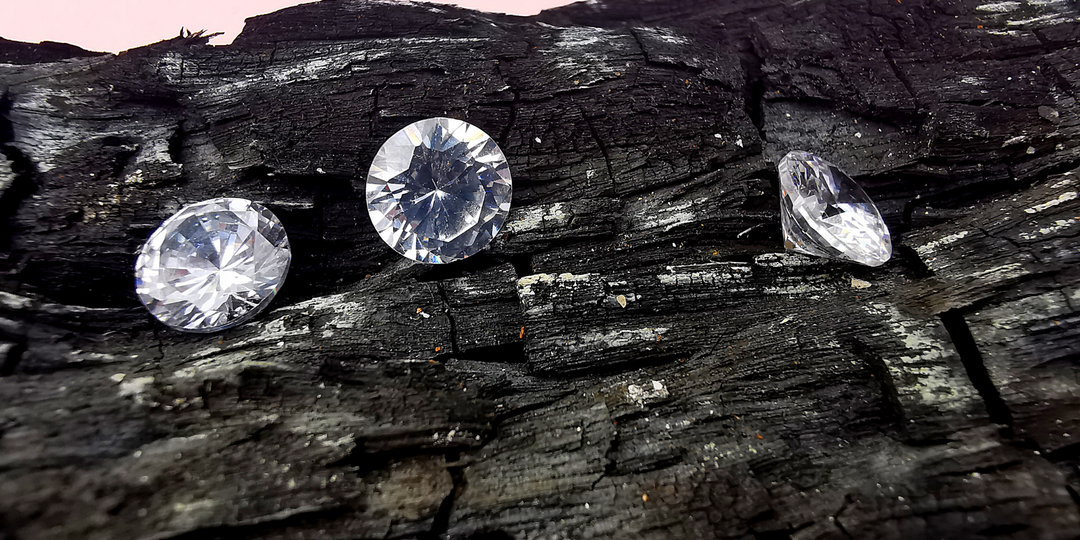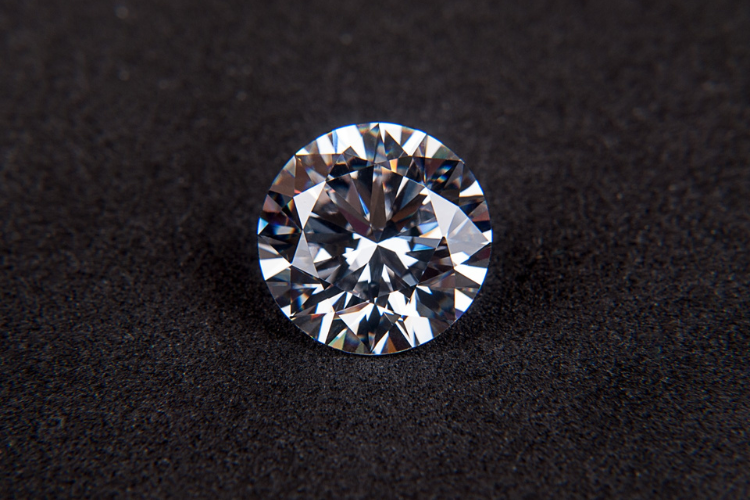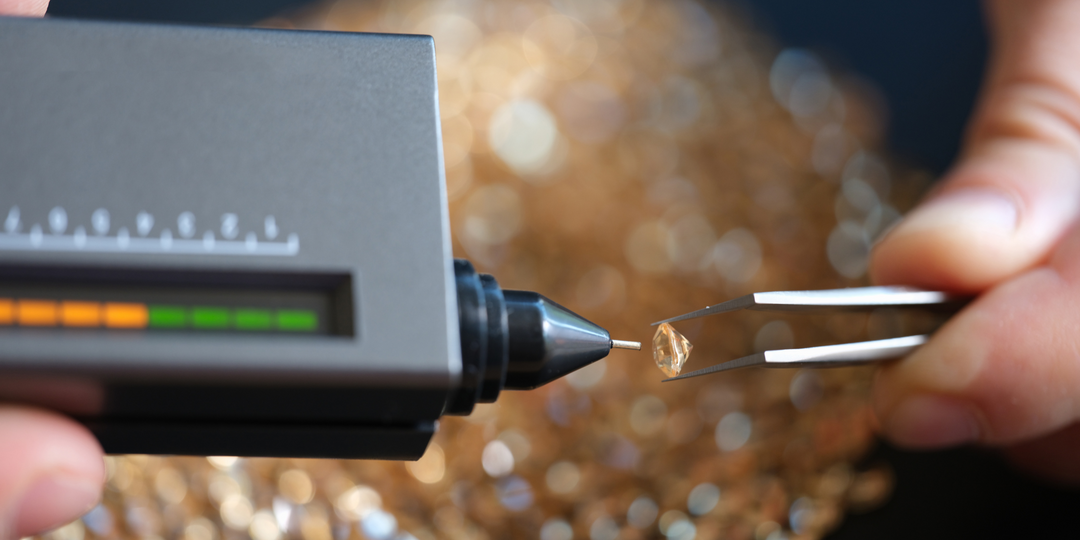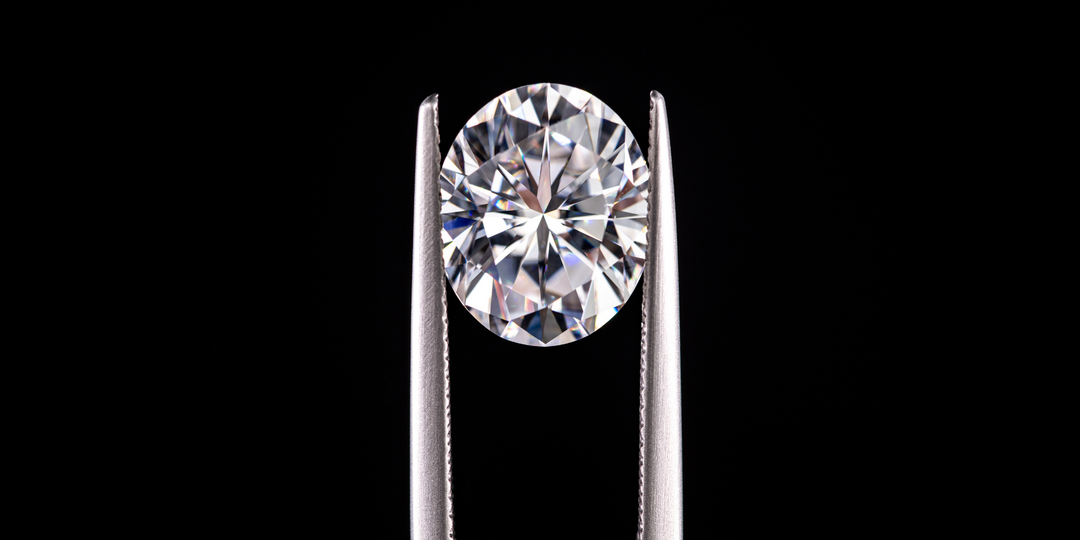What is Diamond Fluorescence and How Does It Affect Your Diamond’s Appearance
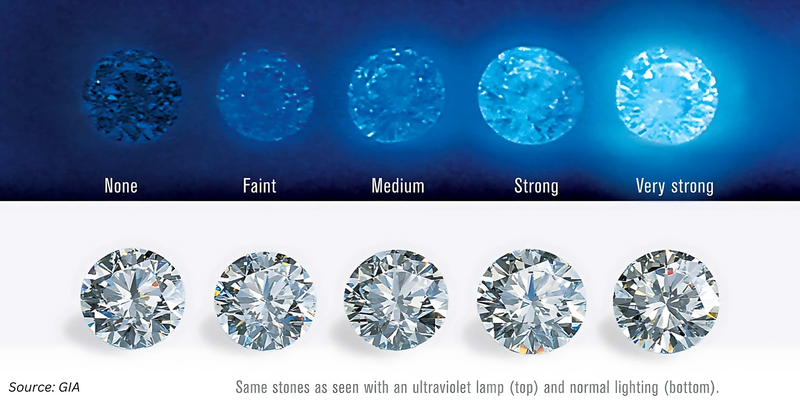
When you think about diamonds, the first thing that probably comes to mind are sparkle, brilliance, and clarity. But there’s a hidden characteristic that many people overlook: fluorescence. This trait doesn’t just exist in science labs or under black lights at parties, but it plays a role in how your diamond looks every single day. Whether you’re shopping for an engagement ring or simply curious about gemstones, understanding fluorescence can help you make better decisions.
In this post, we’ll break down everything you need to know about diamond fluorescence. We’ll explain what it is, why some diamonds glow under certain conditions, and how strong or weak fluorescence might influence the way a diamond appears. By the end, you’ll have a clear picture of whether fluorescence matters to you and if it does, how to use it to your advantage.
What is Diamond Fluorescence?
Let’s start with the basics. Diamond fluorescence refers to the glow a diamond emits when exposed to ultraviolet (UV) light. Think of those moments when you’ve walked into a club or seen something lit up by a black light that eerie blue or greenish glow. Some diamonds do the same thing, though not all of them react this way.
This glowing effect happens because of tiny amounts of elements like nitrogen trapped inside the diamond during its formation deep within the Earth. These elements absorb UV light and then release energy as visible light, creating the glow. It’s important to note that fluorescence isn’t harmful to the diamond itself; it’s simply a natural phenomenon caused by its unique structure.
Not every diamond fluoresces. Only about 25-35% of diamonds show any kind of reaction to UV light. And even among those that do, the intensity varies widely. Some diamonds emit a faint glow, while others shine brightly enough to be noticeable without special equipment. Understanding this trait helps buyers figure out which diamonds suit their preferences best.
How Do Diamonds React Under UV Light?

Now, let’s dive deeper into what happens when a diamond meets UV light. Imagine holding a diamond under sunlight on a bright day. You won’t see anything unusual unless the sun has high levels of UV rays. However, take that same diamond indoors and place it under a black light, and suddenly, it might start glowing.
The glow usually appears blue, but other colors like yellow, green, or white are possible, too. Blue is the most common color because nitrogen atoms often cause fluorescence, and they tend to produce blue light. The strength of the glow depends on several factors, including the concentration of impurities inside the stone and the type of UV light being used.
It’s worth mentioning that not all UV sources trigger fluorescence equally. For example, direct sunlight contains some UV rays, but they’re weaker compared to artificial UV sources like black lights. That means a diamond might not glow outdoors even if it reacts strongly indoors. This variability makes fluorescence both fascinating and tricky to predict.
Some people worry that fluorescence could mean a diamond is fake, but that’s not true. Many natural diamonds exhibit fluorescence, and lab-grown ones can, too. Instead of seeing it as a flaw, think of fluorescence as another layer of complexity that adds character to each diamond.
Types and Strength Levels of Diamond Fluorescence
Diamond fluorescence isn’t a one-size-fits-all feature. It comes in different types and strength levels, which can affect how the diamond looks. Here’s a breakdown:
Types of Fluorescence
- Blue Fluorescence: This is the most common type. It can make a diamond appear whiter or brighter under UV light.
- Yellow Fluorescence: Less common, but it can give the diamond a warm, yellowish glow.
- White Fluorescence: Rare, and it usually creates a soft, neutral glow.
Strength Levels
- None: No fluorescence at all. About two-thirds of diamonds fall into this category.
- Faint: A very subtle glow that’s hard to detect unless you’re looking closely.
- Medium: A moderate glow that’s easier to spot but still not overwhelming.
- Strong: A bright, obvious glow that can change the diamond’s appearance.
- Very Strong: An intense glow that significantly affects the diamond’s look.
The strength of fluorescence can influence how the diamond appears in different lighting conditions. For example, a diamond with strong blue fluorescence might look brighter in sunlight but slightly hazy indoors.
The Impact of Fluorescence on Diamond Appearance
Now, let’s talk about how fluorescence affects the way your diamond looks. This is where things get interesting because it can have both positive and negative effects, depending on the situation.
Indoors Vs. Outdoors
Under normal indoor lighting, fluorescence rarely shows up unless you’re using a black light or a similar UV source. Outside, however, sunlight contains small amounts of UV rays, which can activate fluorescence in susceptible diamonds. If the fluorescence is strong, it might give the diamond a hazy or oily appearance, particularly in direct sunlight. On the other side, faint or medium fluorescence can sometimes improve a diamond’s brightness by adding a soft glow.
Color Enhancement
Here’s where things get interesting. Fluorescence can enhance the color of certain diamonds. Take lower-color grades like I, J, or K because these stones often have a slight yellow tint. When paired with blue fluorescence, the yellow tones can appear neutralized, making the diamond look whiter than its grade suggests. This effect is why some shoppers specifically look for fluorescent diamonds in warmer hues.
Negative Effects
On the downside, very strong fluorescence can sometimes make higher-grade diamonds (D-F) look cloudy or milky. This issue doesn’t occur in all cases, but it’s something to watch out for. If you’re considering a diamond with strong fluorescence, ask to view it in different lighting conditions to ensure it meets your expectations.
Ultimately, the impact of fluorescence boils down to personal preference. Some people love the added dimension it brings, while others prefer the classic look of a non-fluorescent stone.
Does Fluorescence Affect Diamond Value?
When it comes to buying jewelry, value is always a top consideration, and fluorescence can influence the price. Typically, diamonds without fluorescence tend to be more expensive than those with medium or strong fluorescence. But why is that? It often comes down to perception because many buyers assume that fluorescence indicates lower quality, even though this isn’t always the case.
For example, a D color diamond with no fluorescence will almost always cost more than a comparable stone with strong fluorescence. Sellers often discount fluorescent diamonds to account for potential buyer hesitation. However, savvy shoppers can take advantage of this trend. If you don’t mind or even like the effects of fluorescence, you could buy a beautiful diamond at a reduced price.
On the other hand, diamonds with faint fluorescence can actually fetch slightly higher prices because they’re seen as rarer and can subtly enhance the stone’s appearance. At the end of the day, it really comes down to supply and demand, as well as personal preferences. What one person might see as a drawback, another might view as a unique and appealing feature.
Should You Buy a Fluorescent Diamond?
So, should you go for a diamond with fluorescence? The answer depends on your personal preferences and priorities. Here are some things to consider:
Reasons to Buy a Fluorescent Diamond
- Cost Savings: Diamonds are often less expensive than non-fluorescent diamonds, so you might be able to get a larger or higher-quality stone for your budget.
- Unique Look: If you like the idea of a diamond that glows under certain lighting conditions, fluorescence can add a special touch.
- Color Enhancement: For diamonds with a slight yellow tint, blue fluorescence can make the stone appear whiter and more attractive.
Reasons to Avoid a Fluorescent Diamond
- Haziness: If the fluorescence causes a hazy or milky appearance, it might detract from the diamond’s beauty.
- Unpredictable Effects: Fluorescence can affect different diamonds in different ways, so it’s hard to know exactly how it will look until you see the stone in person.
- Personal Preference: Some people simply prefer the classic, non-fluorescent look.
The best way to decide is to view the diamond in various lighting conditions. See how it looks in natural light, indoor light, and under UV light, if possible. This will give you a better idea of how fluorescence affects the stone.
Conclusion
Diamond fluorescence is a fascinating feature that can have a big impact on the way your diamond looks. It’s not inherently good or bad but it all depends on the individual diamond and your personal preferences. Some people love the unique glow that fluorescence adds, while others prefer the classic look of a non-fluorescent diamond.
When shopping for a diamond, take the time to examine stones with and without fluorescence. Pay attention to how they look in different lighting conditions, and don’t be afraid to ask questions. By understanding diamond fluorescence, you’ll be better equipped to choose a stone that’s perfect for you.

